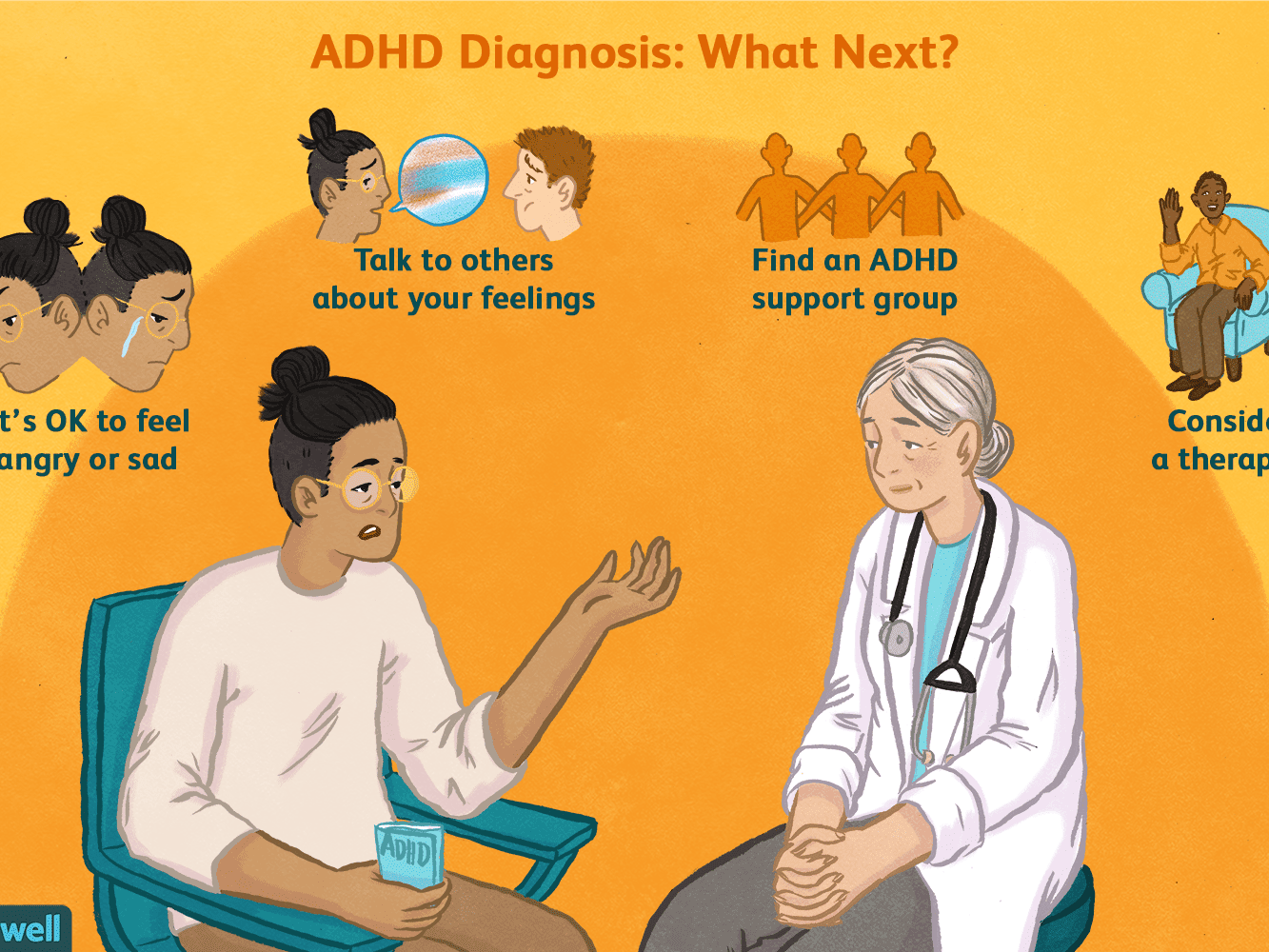Adult ADHD Diagnosis: Next Steps And Support

Table of Contents
Understanding Your ADHD Diagnosis
A comprehensive adult ADHD diagnosis goes beyond simply identifying symptoms. It involves a thorough evaluation to rule out other conditions that may present similar challenges. There are three primary subtypes of ADHD:
- Inattentive ADHD: Primarily characterized by difficulties with focus, organization, and sustained attention. Individuals may struggle with forgetfulness, procrastination, and difficulty following instructions.
- Hyperactive-Impulsive ADHD: Marked by excessive restlessness, impulsivity, and difficulty staying still. Individuals may interrupt conversations, fidget constantly, and struggle with controlling their actions.
- Combined ADHD: A combination of both inattentive and hyperactive-impulsive symptoms. This is the most commonly diagnosed subtype.
Your diagnosis should include a detailed symptom review, psychological testing (such as questionnaires and behavioral assessments), and a careful consideration of other possible contributing factors.
- Review your diagnostic report with your doctor: Ensure you understand the specifics of your diagnosis and the reasoning behind it.
- Ask clarifying questions about your specific ADHD presentation: Understanding your unique symptom profile is essential for tailoring effective treatment.
- Understand the implications of your diagnosis for various aspects of your life: This includes your work, relationships, and overall well-being. Knowing how ADHD might impact these areas allows for proactive strategies.
- Research different subtypes of ADHD to better understand your own experience: Learning about the nuances of ADHD can empower you to advocate for your needs and manage your symptoms more effectively.
Treatment Options for Adult ADHD
Effective management of adult ADHD often involves a combination of approaches. Common treatment strategies include medication and therapy.
Medication: Stimulant and non-stimulant medications are commonly prescribed to help manage ADHD symptoms. Stimulants, like methylphenidate (Ritalin) and amphetamine (Adderall), increase dopamine and norepinephrine levels in the brain, improving focus and attention. Non-stimulants, such as atomoxetine (Strattera), work differently, affecting norepinephrine levels. While medications can be very effective, they can have side effects, which should be discussed with your prescribing physician.
Therapy: Therapeutic interventions play a vital role in learning coping mechanisms and strategies for managing ADHD. Cognitive Behavioral Therapy (CBT) is frequently used to identify and modify negative thought patterns and behaviors. Behavioral therapy focuses on teaching practical skills to manage impulsivity, improve organization, and enhance self-regulation.
- Explore medication management with your psychiatrist or doctor: Regular monitoring and adjustments are crucial to optimize treatment effectiveness and minimize side effects.
- Consider therapy options like cognitive behavioral therapy (CBT) to develop coping mechanisms: Therapy can provide valuable tools for managing challenges related to ADHD.
- Discuss lifestyle changes that can support ADHD management (diet, exercise, sleep): A healthy lifestyle can significantly improve symptom management.
- Research different ADHD medications and their potential side effects: Informed decision-making is essential when considering medication options.
Seeking Support and Building a Support Network
Living with ADHD can be challenging, and having a strong support system is crucial. This support can come from various sources:
-
Family and Friends: Educate those close to you about ADHD. Explain how they can offer practical and emotional support.
-
Support Groups: Connecting with others who understand your experiences can be incredibly valuable. Many online and in-person support groups for adults with ADHD exist.
-
Professionals: Therapists specializing in ADHD can provide individualized support and guidance. ADHD coaches can offer practical strategies and accountability.
-
Connect with online or in-person support groups for adults with ADHD: Share experiences and learn coping strategies from others.
-
Inform family and friends about your diagnosis and how they can offer support: Open communication is key to building a strong support network.
-
Consider working with a therapist specializing in ADHD to develop coping strategies: A therapist can help you address specific challenges and develop personalized strategies.
-
Explore ADHD coaching for personalized support and guidance: A coach can provide practical tools and support to help you achieve your goals.
-
Find local resources and organizations that offer support for adults with ADHD: Many organizations offer resources and support for individuals with ADHD.
Utilizing Technology and Apps for ADHD Management
Technology can be a powerful tool for managing ADHD symptoms. Numerous apps offer assistance with organization, time management, and focus.
- Explore time management apps to improve productivity and organization: Apps like Todoist or Any.do can help you track tasks and prioritize activities.
- Utilize reminder apps to stay on task and avoid missed appointments: Calendar reminders and notification apps can help you stay organized and on schedule.
- Consider using focus-enhancing apps to minimize distractions: Apps designed to block distracting websites or limit screen time can help improve concentration.
Navigating Workplace Challenges with ADHD
Disclosing your ADHD diagnosis at work is a personal decision. If you choose to disclose, understand your rights under the Americans with Disabilities Act (ADA) or equivalent legislation in your country. This legislation protects individuals with disabilities from discrimination and may allow you to request reasonable accommodations.
- Understand your rights and protections in the workplace related to ADHD: Familiarize yourself with relevant employment laws.
- Research workplace accommodations that might benefit you: This could include flexible work arrangements, assistive technology, or modified work tasks.
- Develop strategies for managing your ADHD symptoms at work: Identify your challenges and create personalized strategies for overcoming them.
- Consider seeking mentorship or support from colleagues: Building a supportive network at work can be beneficial.
Conclusion
Receiving an adult ADHD diagnosis is a significant step towards improving your life. By understanding your diagnosis, exploring various treatment options, building a strong support network, and utilizing available resources, you can effectively manage your symptoms and live a fulfilling life. Remember, navigating the world with ADHD requires ongoing effort and self-advocacy. Don't hesitate to reach out for support. Take the next step towards better management of your symptoms – learn more about managing your Adult ADHD Diagnosis today!

Featured Posts
-
 Netflix Tremors Series What We Know So Far
Apr 29, 2025
Netflix Tremors Series What We Know So Far
Apr 29, 2025 -
 Capital Summertime Ball 2025 Ticket Purchase A Comprehensive Guide
Apr 29, 2025
Capital Summertime Ball 2025 Ticket Purchase A Comprehensive Guide
Apr 29, 2025 -
 Dsp India Fund Cautious Outlook Increased Cash Reserves
Apr 29, 2025
Dsp India Fund Cautious Outlook Increased Cash Reserves
Apr 29, 2025 -
 Tornado And Flooding Emergency Louisville Under State Of Emergency
Apr 29, 2025
Tornado And Flooding Emergency Louisville Under State Of Emergency
Apr 29, 2025 -
 Akeso Plunges Cancer Drug Trial Disappoints
Apr 29, 2025
Akeso Plunges Cancer Drug Trial Disappoints
Apr 29, 2025
